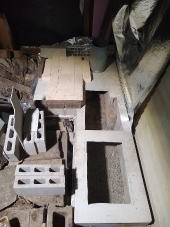Jordan Holland wrote:We use them because they are awesome! They do the job well, and they are free. (And there's nothing wrong with how they look.😂)
Trust me, i wasn't questioning them because i care about looks. lol. I just didn't want to waste if it wasn't needed, why put it in.
But after reading about the expansion joints, i realised that it might be good, to protect the bricks from quick heat up/cold down and probably worth throwing one in. You won't see it in mine. lol So, i don't care what it looks like anyhow. not that I would care what my heater looked like. It's a heater, not wall photo. But my stove will be all bricked in so you only see bricks no mater if i put a barrel in or not.










